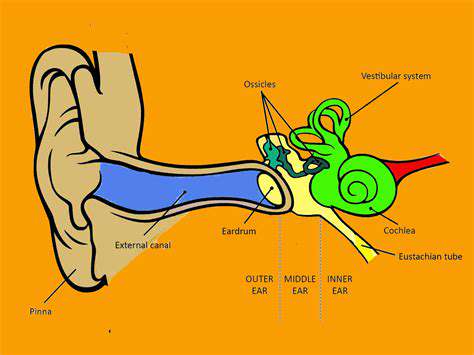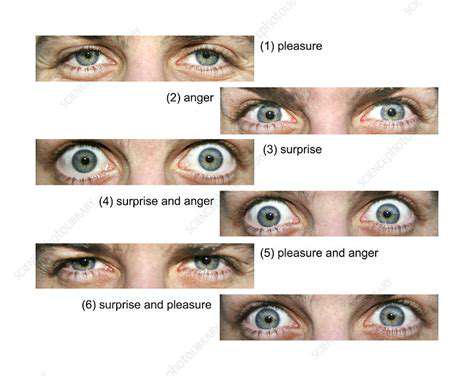Decoding Your Dog's Body Language for Better Communication
Common Body Language Signs to Recognize

Tail Position and Movement
The position of a dog's tail can communicate a wide range of emotions. A tail held high often indicates confidence and excitement, while a lowered tail might signify submission or fear. It's essential to observe the speed of the wag as well—rapid wagging can indicate happiness, whereas slow wagging could mean the dog is unsure or anxious.
Different breeds may have varying tail types; for instance, a Basenji’s tail curls over its back, while a Labrador’s tail is more straight and powerful. Understanding these nuances can help you interpret your dog's emotional state more accurately. A wagging tail isn’t always a sign of friendliness, so always consider the dog’s overall posture.
Additionally, some dogs might display a flicking motion or stiff wagging that can indicate agitation or annoyance. By paying close attention to tail movements, you can gain insights into how your dog is feeling in any situation.
Facial Expressions and Ears
A dog’s facial expressions are vital for understanding its emotions. Relaxed eyes, an open mouth, and a slightly panting tongue often indicate that a dog is happy and comfortable. Conversely, narrowed eyes and bared teeth can signal aggression or fear, making it crucial to recognize these signs to avoid conflict.
The position of a dog’s ears also plays a significant role in their body language. Ears that are perked up and facing forward usually illustrate alertness or interest, while ears that are pinned back against the head often reflect fear or submission. Paying attention to these subtle cues can enhance your interaction with your dog.
Training your dog to recognize its emotional expressions can strengthen your bond and improve communication. Regularly assessing your dog’s ears and facial expressions helps create a better understanding of their mood and intentions.
Body Posture and Movement
A dog’s overall body posture can indicate its current state of mind. A relaxed and loose body suggests comfort and ease, while a tense, rigid posture may indicate distress or aggression. Observing these behaviors is key to interpreting your dog’s emotional landscape.
Furthermore, how a dog approaches new situations speaks volumes about its confidence levels. A dog that approaches with a relaxed gait and open stance is likely feeling brave, whereas one that hesitates or crouches may be feeling fearful. Understanding these movements is crucial for ensuring a positive experience for your dog.
Being aware of your dog's body language can help you identify when it may need assistance or could be feeling overwhelmed. With practice, you’ll become adept at reading your dog’s posture and movements, leading to a more harmonious relationship.
1. Tail Position and Movement
Understanding Tail Positioning
The position of a dog's tail can convey a range of emotions and intentions. A tail held high indicates confidence and happiness, while a low tail may signal submission or insecurity. When you observe your dog with its tail in a neutral position, it often means they are calm and relaxed. Understanding these positions allows you to better gauge your dog's feelings in various situations.
Moreover, the angle at which the tail is held can provide additional insights. A tail that is slightly raised and wagging can indicate excitement or eagerness, while a fast, stiff wag might suggest that the dog is agitated or overly stimulated. Observing these nuances can help you respond appropriately and create a comforting environment for your dog.
Tail position is also affected by breed characteristics. For example, some breeds naturally have tails that curl over their backs, while others have long, straight tails. This means it's essential to understand your dog's unique tail posture in context to interpret their feelings accurately.
In different settings, such as at a dog park or during a walk, watching your dog's tail can inform you about their comfort level. If they are in a stressful situation but their tail is wagging slightly, it may indicate that they are managing their anxiety. Pay attention to these signals to help minimize stress and enhance your dog's well-being.
Tail Wagging: More Than Just Happy
Many dog owners associate a wagging tail with happiness, but the truth is that the context and accompanying behaviors significantly influence what the wagging means. For instance, a slow wag can signify cautiousness or uncertainty. Your dog could be indicating that they want to approach but are unsure of the situation.
Conversely, a rapid, vigorous wagging tail can indicate excitement or friendliness, but it can also hint at overstimulation. In social interactions, particularly with other dogs, observing the speed and nature of the tail wag can safely guide you in assessing whether play is appropriate.
The direction in which a dog wags its tail also matters. Research shows that if a dog wags more to the right, it may indicate positive emotions, while wagging to the left could signify negative feelings. Paying attention to these subtleties can enhance your understanding of your dog's emotional state and help improve your interactions with them.
Finally, it's essential to consider the entire body language of your dog, rather than focusing solely on the tail. A wagging tail accompanied by a tense body or a fixed stare can mean that your dog is feeling threatened or scared, reminding us that communication involves a combination of signals that need to be interpreted collectively.
2. Ears and Their Movements

Understanding Ear Positions
Dogs communicate a lot through their ear positions. When a dog’s ears are perked up and facing forward, it typically indicates that they are alert and attentive. On the other hand, if the ears are lowered or pulled back, it may signify fear, submission, or even relaxation depending on the context.
Different breeds have various ear shapes, which can also influence what their ear movements mean. For example, floppy-eared dogs might express different emotions compared to those with erect ears when showing their feelings.
Interpreting Ear Movements
The way a dog moves its ears can tell you even more about their mood. If a dog is rapidly swiveling its ears, it usually means that they are trying to pick up on different sounds or are particularly curious about their environment.
Conversely, if a dog’s ears are stiff and not moving, it can indicate that they are feeling threatened or aggressive. Learning to read these subtle cues will help you better understand and respond to your dog’s needs and feelings.
3. Eye Contact and Facial Expressions

Understanding Eye Contact
Dog eye contact can convey a variety of emotions and intentions. When a dog maintains steady eye contact, it might indicate confidence or curiosity towards a person or another animal. However, prolonged eye contact can also be perceived as a challenge or threat, especially in more cautious dogs. It’s essential to observe the dog's overall body language to ensure that the eye contact is friendly rather than aggressive.
Conversely, if a dog tends to avoid eye contact, it may signal submission or anxiety. This behavior often happens in situations where the dog feels insecure, such as meeting new people or being in unfamiliar environments. Recognizing this can help you adjust your approach to make the dog feel more secure and comfortable.
Eye contact should be used wisely when interacting with a dog. Creating a stock of positive experiences around eye contact can reinforce a bond and encourage open communication. Gentle, soft eye contact from the handler can often encourage the dog to feel safe and more willing to engage.
Facial Expressions and Their Meanings
Dogs utilize their facial expressions to communicate emotional states, and being able to decode these can significantly improve your interaction with them. A dog with a relaxed face, including soft eyes and a slightly open mouth, generally indicates a calm and happy demeanor. Recognizing this expression can help you know when your dog is at ease and enjoying their environment.
In contrast, a dog that is showing a wrinkled snout or curled lips may be signaling discomfort, aggression, or fear. Facial expressions like these are crucial to recognize as they can help prevent potentially volatile situations. Understanding when a dog is feeling threatened can lead to proactive measures to ease their fear.
Additionally, playful dogs often show bright, alert facial expressions with pulled-back ears and a wagging tail. This joyful demeanor invites interaction and play. By acknowledging these expressions, you can engage more effectively with your dog and enhance your playtime together.
4. Body Posture
Understanding Relaxed Postures
When a dog is in a relaxed state, their body is typically loose and unguarded. You may notice that they lie on their side or back, exposing their belly. This is a sign that they feel safe and comfortable in their environment.
A relaxed dog will also have a natural stance, with their head held high and tail in a neutral position or gently wagging. Their ears may be in a neutral position, neither pinned back nor perked up in alertness.
Recognizing these signals is crucial for building trust with your dog. When they feel at ease, they are more likely to respond positively to training and social interactions.
Conversely, if you notice sudden changes in their posture, it might indicate stress or discomfort. Pay attention to the shifts in their body language, as they can reveal a lot about their emotional state.
Creating a relaxed environment can help your dog feel secure. Simple things like a quiet space or a cozy bed can contribute significantly to their overall well-being.
Identifying Signs of Stress or Anxiety
A dog that feels threatened or anxious will often display tense body language. This might include a stiff body, tightly closed mouth, and ears pinned back against their head.
You may also see them pacing or hiding, which is a clear indication that they are uncomfortable. If your dog is frequently curling up or tucking their tail, it’s a signal that they are feeling insecure.
Another common sign of stress is excessive yawning or licking their lips. These behaviors can be ways for dogs to self-soothe when they are feeling anxious.
Understanding these distress signals is essential for any dog owner. By recognizing when your dog is feeling uneasy, you can take appropriate steps to alleviate their discomfort.
Providing reassurance and a safe space can help your dog manage their anxiety. Whether it’s through training, environmental modifications, or simply offering your presence, your support is crucial.
The Role of Tail Position and Movement
The position of a dog's tail is one of the most expressive elements of their body language. A high, wagging tail usually indicates excitement or happiness, while a low or tucked tail suggests fear or submission.
However, not all tail wags are the same. A fast wagging tail might reflect enthusiasm, whereas a slow, stiff wag could indicate insecurity or aggression. Observing the nuances in tail movement can provide insights into your dog's mood.
When a dog approaches you with their tail held high and loosely wagging, it typically signifies joy and friendliness. This is the ideal posture for social interactions.
Conversely, if your dog’s tail is held high but stiff, it might indicate that they are on alert. They could be wary of their surroundings, and it’s essential to assess the context of the situation.
Taking note of your dog's tail position can be a key tool in understanding their emotional landscape. It helps in predicting their reactions in different scenarios, fostering a deeper bond and improving communication.
5. Vocalizations and Their Role
Understanding Barks and Their Meanings
Barking is one of the primary ways dogs communicate with both humans and other animals. Each bark can have a different tone or pitch, which may indicate various emotions or intentions. For instance, a high-pitched bark can signify excitement or playfulness, while a deep, low bark might indicate a threat or warning.
It’s essential to pay attention to the context in which the barking occurs. Is your dog barking at a stranger passing by or towards a toy that it wants to play with? Understanding the situation helps decipher the bark's intent. Observations like these contribute significantly to building better communication with your pet.
Additionally, dogs often use barks to signal their needs, such as wanting to go outside or asking for attention. Being attuned to these vocalizations can foster a more responsive relationship and ensure that your dog's needs are met promptly.
Over time, you may even notice specific barks that are unique to your dog, which could indicate their particular preferences or emotional states. Building this understanding can enhance the bond you share.
Whines and Whimpers: The Subtle Signals
Whining is another common vocalization among dogs that can indicate a variety of emotions, including anxiety, fear, or a desire for attention. When a dog whines, it’s crucial to consider the context to accurately interpret what they’re trying to convey.
For example, a dog may whine when it sees its owner preparing to leave the house, reflecting distress about being apart. On the other hand, if a dog whines during playtime, it may be a sign of excitement or eagerness for interaction.
Understanding these nuances allows owners to respond appropriately. If your dog is whining due to anxiety, soothing words or a calming presence may help. Conversely, if the whining is due to excitement, engaging in play can meet their needs.
Ultimately, recognizing and addressing the reasons behind whines can strengthen your dog’s sense of security and trust in you, enhancing your communication.
Growls: Communication of Discomfort or Warning
Growling is often perceived negatively, but it’s a natural form of communication for dogs. A growl can signify discomfort or a warning to back off, which is a vital signal that should be respected. Understanding the context surrounding a growl is crucial in determining whether it’s playful or serious.
For instance, a growl during play can indicate that your dog is having fun, while a growl when approached while eating can signal that they feel threatened. Recognizing these situations can help prevent misunderstandings and promote a safer environment for both the dog and the owner.
It's essential to approach a growling dog with caution and respect their space. Ignoring a growl can lead to escalated behavior, as the dog may feel it needs to escalate its warnings if they are not being respected.
By fostering an environment where your dog feels safe to express discomfort through growling, you can encourage open communication and a better understanding of your pet's emotional state.
Other Vocalizations: The Many Voices of Dogs
Aside from barking, whining, and growling, dogs have a range of other vocalizations that can provide insight into their feelings and desires. These can include howls, yips, and even silent communications like lip licking or sighing, which all carry meaning in the canine world.
Howling, for instance, is often associated with seeking attention or trying to communicate over long distances, reminiscent of their ancestral wolf lineage. If your dog howls when left alone, it may be expressing loneliness or a desire for connection.
Yipping or yelping typically indicates pain or excitement. Recognizing when your dog is vocalizing in this manner can prompt immediate action to either comfort them or join them in their joyful moment.
Understanding the full spectrum of your dog’s vocalizations creates a richer dialogue between you and your pet. Every sound carries emotion and intent, contributing to the bond you share and enhancing your ability to respond to their needs effectively.
- Smart Technology Revolutionizing Daily Living and Industry Practices
- Storm Risks for Dogs: What Pet Owners Need to Know
- Monitor Your Dog's Behavior for a Happier Pet
- The Unique Temperament of Every Dog: A Guide for Dog Owners
- Decoding Canine Behavior: A Comprehensive Guide
- Enhancing Workplace Productivity Through Employee Involvement Strategies
- If You Notice Your Dog Acting Unusually, Here's What To Do
- The Importance of Emotional Intelligence in Developing Effective Communication Skills
- Effective Strategies to Calm a Stressed Dog
- Tips for calming a stressed or anxious dog